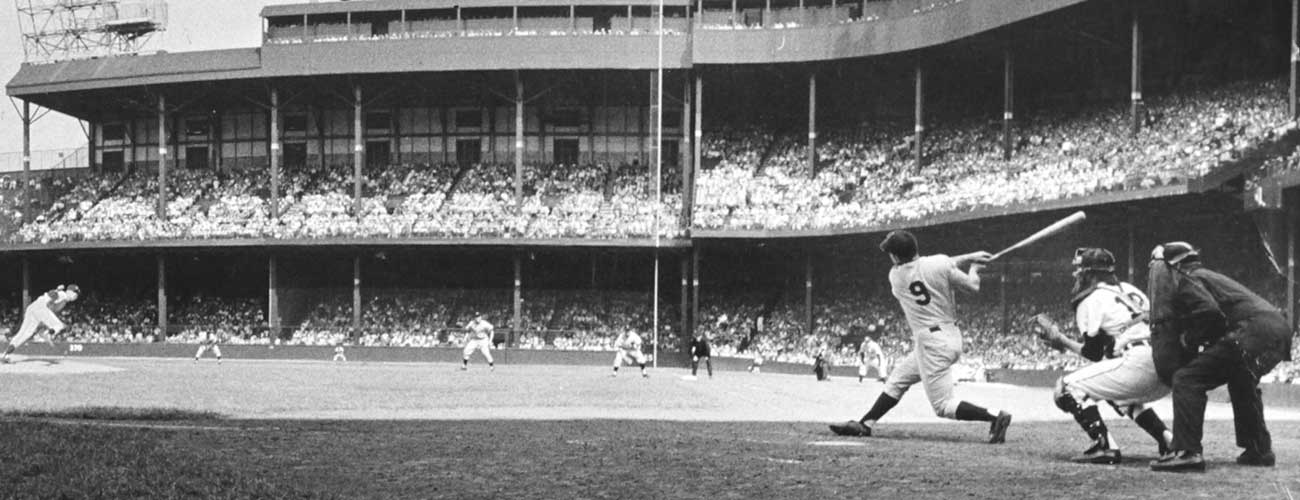Sign up for the daily CJR newsletter.
The revered journalist Walter Lippmann is said to have claimed that “Cronyism is the curse of the newspaperman.”
Perhaps. But once it was the mother’s milk of sportswriters–for better or worse.
My career as a New York Times sportswriter straddled two eras, from that time (1959) when reporters wore suits and fedoras and played poker with athletes on train rides, to the “modern” era of antiseptic locker rooms, timed interviews, and a respectful distance between player and writer. The players, meanwhile, have become millionaires. They don’t really need us. The writer? Not so poor, but not as rich, either. But we still need to talk to the players. We just don’t have the same easy rapport because there is virtually no real human interaction.
Which time was better? Well, I had more fun in the days of long train rides. And since what I was writing about really had little effect on how people voted, I’m not so sure it was so bad. Ultimately, did it serve the reader? Was it honest journalism?
I was the Jets’ guy for many years at The Times. And, yes, my ability to get to Joe Namath while he was in the whirlpool soaking his surgical knees was great for me, great for the readers, and didn’t keep important things from the public.
Yes, I had heard the stories of the Kennedy Administration, when sycophantic reporters never wrote about secret trysts in the White House. But what dark secrets did the goalie for hockey’s Rangers have that would have enlightened the public?
I remember downing a drink with the Rangers’ star, Rod Gilbert, in the swaying club car taking the team to Detroit. And then there were all those so-called “5-o’clock clubs” on Saturdays when the Jets were on the road and would arrive the day before a game. We’d be drinking, or at least sharing potato chips, with Jets’ management and coaches–people we were writing about.
I don’t think anyone is going to call out Donald Trump because I took him to lunch in the paper’s private dining room back in the mid 1980s, when he owned a football team. And the fact that Don King, who was Mike Tyson’s promoter, invited me to his Las Vegas digs for a private conversation with the champ over pizza—well, you think that affected my ability to write about Tyson’s legal problems?
Teams weren’t afraid of sportswriters, at least the New York teams I came to write about. I was on a Yankees’ charter flight—who can remember when? It was at night—and I was sitting behind the boozy manager, Billy Martin. One of his pitchers was angry after getting roughed up in the game and started a fight with a teammate behind us. The combative Martin got to his feet, as best he could, put his drink on the tray, and said to me, with some irony, “I’ve got to go break up a fight.” Well, I didn’t write about it (if I had, I’m sure the paper wouldn’t have been invited on any more charters).
But I was on a Rangers’ chartered bus, going from Long Island to Montreal (there was an Air Canada strike), and Coach Emile Francis was stunned to find the driver’s wife was along for the ride. Francis told the driver she had to go. Francis had a thing about women being near his players. The bus driver escorted her off—and never returned. And there we were, somewhere on Queens Boulevard, without a driver. Francis got the company to send another one, though, and it made a pretty good story.
Then again, one I didn’t write was about a Jets’ football practice. They used to allow the writers to stand on the sidelines. Not only did we watch the practice from up close, but we also used to toss around a football. One day, the team’s owner, Leon Hess (he of the eponymous gas stations), was at practice. He saw me, and came over.
“Please don’t write I was here,” he said. “I’m supposed to be at the office.”
I kept his secret. Did I violate some ethical journalistic standard?
I thought about what it’s like today when I recently went to a Jets’ practice somewhere in New Jersey. Nice guys. Nice PR setup. But limited. The quarterback speaks to the press only on certain days. No standing around the sidelines. And no 5-o’clock club.
In baseball and hockey, the writers also moan about access and limitations. It’s hard to get to know a player when you have, say, 15 minutes and everyone else wants him, too. I suspect teams—if not the players themselves—are more circumspect these days for two reasons: money and media.
There is so much money at stake that loose lips can hurt a franchise, or can hurt an endorsement deal. And there’s so much media, even when there isn’t media. Everyone with a cellphone is a potential “journalist.” Just ask ex-Jets’ coach Rex Ryan, who, at a mixed-martial arts event in Florida—having nothing to do with football—flipped his middle finger at an annoying fan. Of course, someone was there was a cellphone. Result: a $50,000 fine for the coach. Well, at least he couldn’t blame us.
Has America ever needed a media defender more than now? Help us by joining CJR today.







